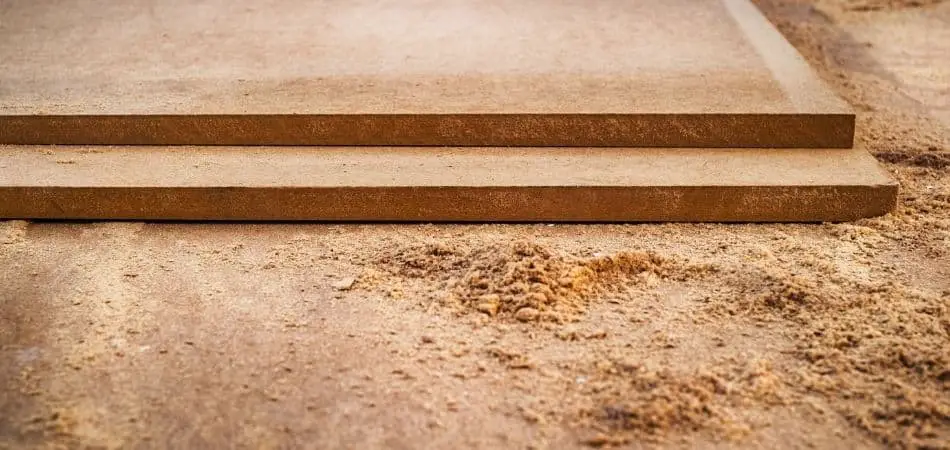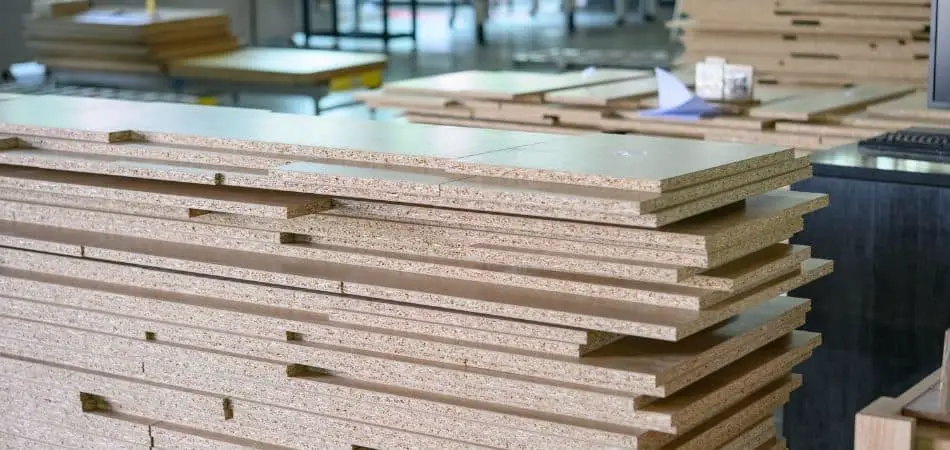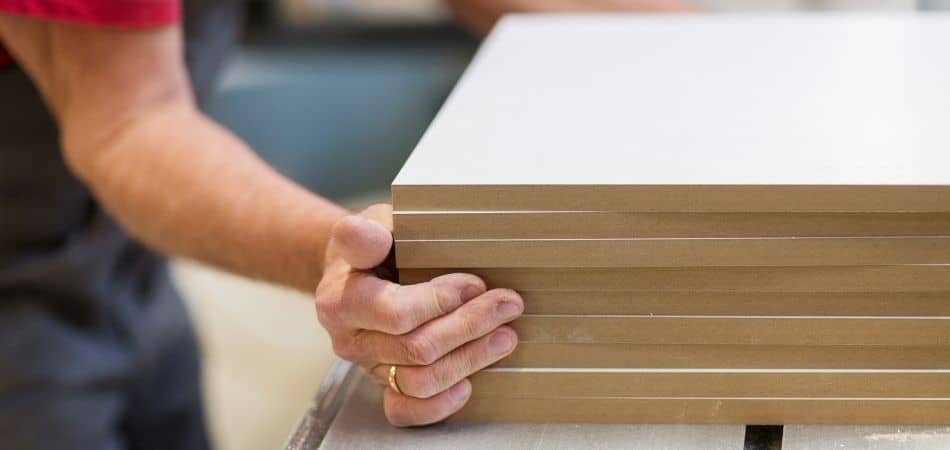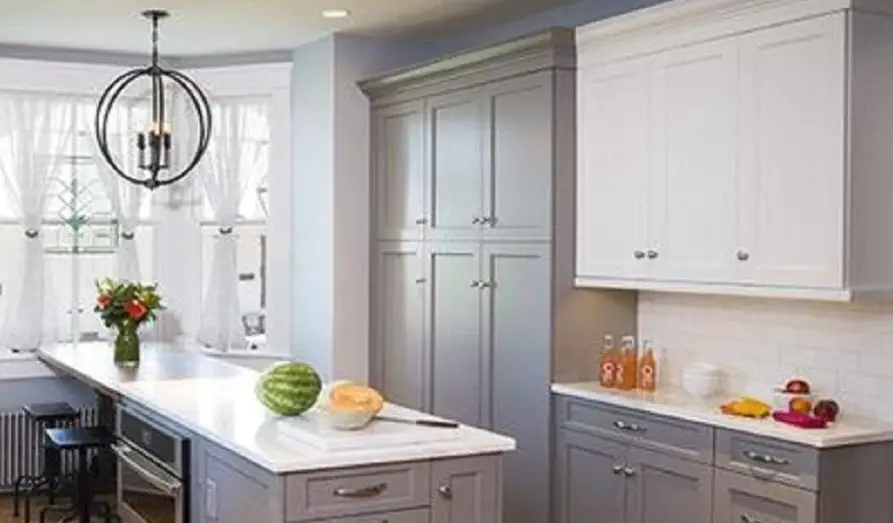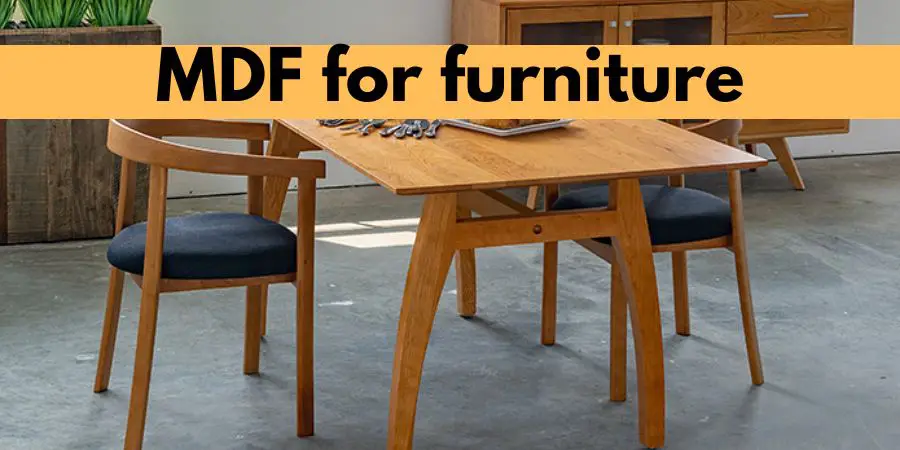Bathrooms present a challenge to the material you use there, the warm showers, steam, and the dropping wet towel there can badly ruin the flooring. Make sure to pick the suitable one.
If you are planning to add MDF panels to your bathroom’s walls, floors, or whatever the place is. There are a few certain things that we think will help you make a better decision. Read more: Is MDF waterproof?
If you’re on a mission to transform your bathroom into a stylish oasis, you’ve probably come across the term “MDF” a few times. But what exactly is MDF, and can it withstand the moisture-laden environment of a bathroom? 🛁
Fret not, because we’re diving deep into this topic to give you the lowdown on whether MDF can be your trusty sidekick in your bathroom renovation adventure.
Let’s get started!
Table of Contents
1. What is MDF?
MDF stands for Medium Density Fiberboard, and it’s a type of engineered wood product that’s made by compressing wood fibers and resin under high pressure and temperature. 🌲💥 The result is a dense, flat panel that’s versatile and widely used in furniture, cabinetry, and interior decor.
2. Moisture and MDF: A Thorny Relationship
Here’s the deal: MDF is notorious for being sensitive to moisture. 🌧️🚿 Bathrooms are inherently humid places, what with showers, baths, and all that steam. When exposed to prolonged moisture, MDF can swell, warp, and even disintegrate – not exactly what you’d want for your beautiful bathroom setup.
3. The Water-Resistant MDF Game Changer
Hold on, because there’s a twist! Water-resistant MDF is now available, specially engineered to handle higher humidity levels without throwing a tantrum. This type of MDF is manufactured with additives that boost its moisture resistance, making it a potential candidate for bathroom projects. 🌊💪
4. Sealing the Deal: Painting and Coating
If you’re set on using MDF in your bathroom, listen up. One way to give your MDF a fighting chance against moisture is by properly sealing and coating it. Applying moisture-resistant primer and paint can create an additional barrier, helping to shield the MDF from the damp environment. 🖌️🛡️
5. Location, Location, Location
Let’s be real: not all parts of your bathroom are created equal when it comes to moisture exposure. Limiting the use of MDF to areas that don’t receive direct splashes of water – think vanity cabinets and shelving away from the shower – can increase its longevity. Avoid direct contact with water as much as possible to keep your MDF happy and intact
6. The Humidity Factor
Okay, folks, let’s talk humidity. Bathrooms are like tropical rainforests of your home, and that moisture can play havoc with MDF. Even with water-resistant MDF, it’s essential to maintain proper ventilation to help control humidity levels. A well-ventilated bathroom can significantly extend the life of your MDF elements. 🌿🌀
7. Joinery and Adhesives
When using MDF in your bathroom projects, remember that the devil is in the details – in this case, it’s the joinery and adhesives you use. Opt for water-resistant adhesives and techniques that minimize the exposure of raw MDF edges. This will help prevent moisture from seeping in and causing trouble. 🧩🔗
8. Alternative Materials
While MDF has its charm, it’s not the only fish in the sea. For areas in your bathroom that are prone to frequent splashes and moisture, consider alternative materials like marine-grade plywood or even solid wood options. These materials are inherently more resistant to moisture and can handle the bathroom environment like pros. 🌊🚀
9. Routine Maintenance
Maintaining your bathroom MDF is just as important as choosing the right material. Regularly inspect your MDF elements for any signs of damage, and address them promptly. Remember, a stitch in time saves nine – a small fix now can prevent a major overhaul later. ⏰🔍
10. DIY vs. Professional Installation
Last but not least, let’s talk about installation. If you’re a seasoned DIYer, you might be up for the challenge of working with MDF in your bathroom. However, if you’re not confident in your skills, it might be worth considering a professional installation. Experts know the ins and outs of dealing with materials in moisture-prone areas, ensuring a job well done. 🛠️👷♀️
How to waterproof an MDF for the bathroom.
It is possible to waterproof MDF for outdoor use, bathroom flooring, or kitchen floor coverings. Here’s how.
The following instructions will teach you how to paint an MDF surface to make it waterproof. or use it in the bathroom. If Different finishes also work well. choose to use. Take this into consideration before you start painting. Apply the primer coat first before coating MDF with paint. Many people do not apply a primer coat because it takes a long time, but it will help the paint adhere more effectively.
Step.1: Start with sanding the MDF surface that you will use in the bathroom. Use a smooth coarse sand grit, 200 or 220 will keep the surface smooth.
Step.2: After sanding is done. You should Apply the primer now.
Use oil-based primer if the paint you’re going to apply is also oil-based. Moreover, oil-based primers and paints resist moisture better than water-based primers, making them great for applications such as bathroom flooring.
The primer must be cured for six hours.
Step.3
Having applied the primer and allowed it to cure to the touch.
This is the time to apply moisture-resistant paint. Brush some paint along the edges of the MDF. Roll some paint across the remaining surface. It is recommended to let the first layer of the paint dry for four hours, before applying another.
To make an MDF water-resistant, a minimum of 3 coats of paint is required. Mind, each of the coats must be cured before the second comes.
Why you should not use MDF in the bathroom?
Below are highlighted reasons why using MDF in a bathroom is not a good idea.
- MDF, regardless of the grade, at some point when contact with water gets swell. In a bathroom, there is no place where the water does not touch. Using MDF material for flooring, furniture, and cabinets will become swell and weak.Only High-Grade MDF boards can resist longer in areas like the bathroom, but they are expensive. MDF boards need to be treated with oil-based paint before use
- in the bathroom.
Frequently asked questions:
Is MDF shiplap OK in a bathroom?
A bathroom can use shiplap, regardless of whether it’s made of wood or MDF, just as long as it’s protected. This means that you should apply the finishing coat or final protective coat to make a shiplap last longer.
Is MDF or plywood better for a bathroom?
If you have two options between MDF and Plywood. Then choose plywood if you have durability even in using plywood in the bathroom’s paneling. Why? Plywoods are way more durable and strong than MDF.
Unlike MDF which is basically a wood fibers product. Plywoods are manufactured using multiple veneers glued together in a cross-grain pattern, increasing the results.
But don’t think that plywood won’t need finishing coats. As a matter of fact, every wooden material needs to be protected from moisture. Including, expensive woods like teak, cherry, maple, and walnut.

